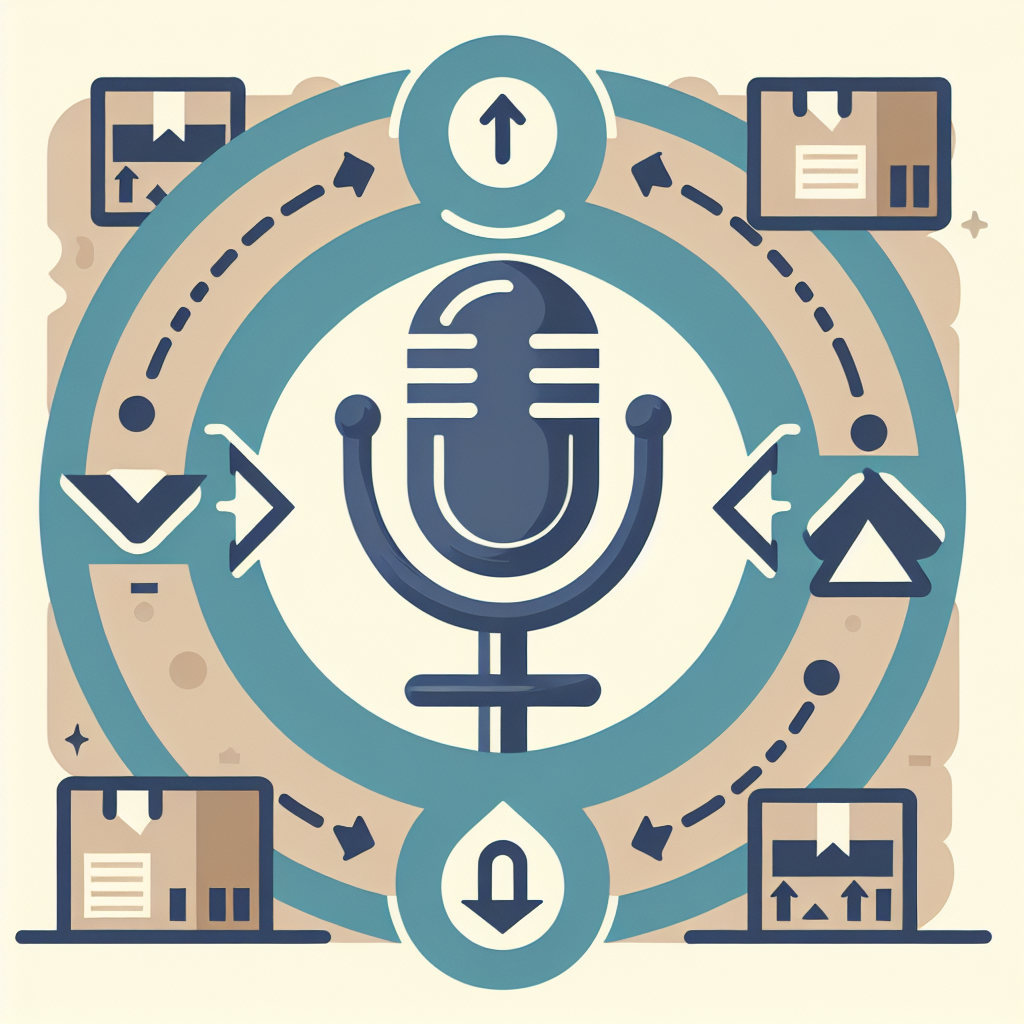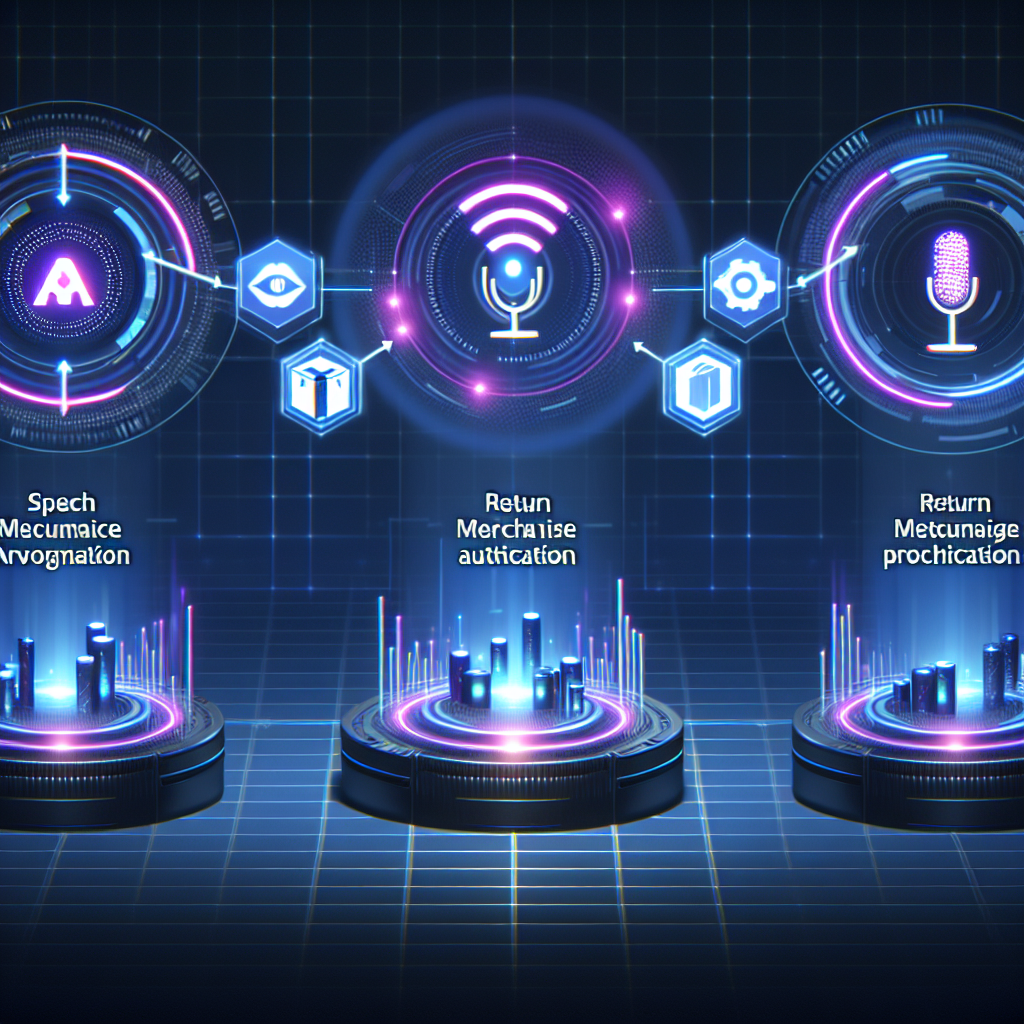
As technological advancements continue to transform various business operations, the concept of Return Merchandise Authorization (RMA) process is not left behind. Among the latest game-changers in this realm is the Voice-Activated RMA processing. This innovative approach leverages voice activation and recognition technologies to manage returns more accurately and expeditiously.

Voice-Activated RMA enhances the efficiency of dealing with returned goods. Instead of time-consuming manual data input and processing, users can expedite the process by simply using voice commands. The system is designed to recognize and respond to verbal instructions, thereby avoiding the common errors and delays associated with traditional RMA process.
Major players across various industries are now incorporating voice activation to hasten returns processing. For instance, retail giants Amazon and Walmart have integrated robust voice activation technologies into their customer service platforms.
The adoption of Voice-Activated RMA in business goes beyond speedy returns. It also brings to light the potential for significant cost savings—fewer manual processes mean reduced labor costs and enhanced productivity. Furthermore, the technology's ability to reduce errors ensures more accurate returns management, enhancing the overall customer experience and in turn, fostering brand loyalty.
In a world where customer demands are rapidly evolving, businesses need to continually innovate. The integration of Voice-Activated RMA presents a promising avenue, not just for meeting modern customer needs, but also staying ahead in the competitive marketplace.
Voice-activated Return Merchandise Authorization (RMA) processing represents a great leap in the digital transformation of business operations. It leverages cutting-edge voice recognition technology with a modernized return processing system to create a seamless, efficient, and customer-friendly process.
Let's first dive into understanding the technology behind voice recognition. At its core, voice recognition, also known as speech recognition, is a technology that converts spoken words into written text. It involves a series of steps including audio input, audio analysis, feature extraction, and finally, the recognition process. During the recognition process, the extracted features are compared with the pre-programmed speech models, and a matching model is then identified and transcribed into text.
Now, when this technology is merged with the RMA process, it revolutionizes the entire experience for the customers and employees. Imagine a scenario where, rather than manually typing or clicking through an automated system, customers can simply state their return request details. The advanced voice recognition technology recognizes and records these details, automatically initiating the RMA process.
On the other side, employees responsible for processing these returns can use the same technology to retrieve the necessary return details. This would greatly reduce the time spent searching through systems and manually inputting data, which can lead to errors. Instead, they can call up the relevant information just by asking for it, thus enhancing the efficiency and accuracy of the RMA process.
Together, the integration of voice recognition into RMA processing can lead to a more streamlined process, improved productivity, and ultimately, higher customer satisfaction.
The introduction of Voice-Activated Return Merchandise Authorization (RMA) Processing is a revolutionary step in customer service and product management. Leveraging the rapid advancements in speech-recognition technology, these systems have unlocked a myriad of benefits in terms of efficiency, customer satisfaction, and data accuracy.

Primarily, these innovative systems streamline the RMA process by increasing operational efficiency. By utilizing voice commands, customer service representatives can quickly input RMA requests instead of manually typing out all details, thus reducing time spent on data entry. This not only ensures quicker response times but also enables representatives to handle more requests simultaneously.
Customer satisfaction is another significant advantage of voice-activated RMA processing. Customers can initiate return or repair requests effortlessly using their voice, and receive immediate confirmations. Such improvements in usability and accessibility lead to an enhanced customer experience and greater satisfaction levels.
Interestingly, this technology also improves data accuracy. Speech recognition minimizes human errors that may occur during manual data entry. Furthermore, it allows for seamless transcription of customer interactions, providing invaluable data for incident analyses and strategic planning.
In a world where seamless customer service is paramount, integrating voice-activated RMA processing can equip businesses with a significant competitive edge. Elements like cutting-edge efficiency, elevated customer satisfaction, and improved data accuracy make this technology a lucrative investment for both B2B and B2C businesses.
In recent years, many businesses have turned to voice-activated RMA processing to streamline their operations. Two standout examples include tech giants Amazon and Apple.
Amazon, famous for its dedication to customer service, has incorporated voice-activated RMA into their return procedures. By cooperating with Alexa, Amazon's users can initiate returns, track their return status, and even schedule pickup times, all by voice command. The implementation of this innovative system has significantly reduced the manpower in managing return requests, and dramatically increased customer satisfaction.
Another example, Apple, integrated Siri into their RMA process. Given Apple's vast user community, such an addition has contributed substantially to processing speed and accuracy. Apple consumers are now able to report product issues, request RMAs, and track the processing status through simple voice commands to Siri. As a result, Apple’s RMA processing time has seen a significant reduction, and the overall customer experience is greatly enhanced.
In conclusion, these instances prove that with voice-activated RMA, businesses can achieve more efficient return processing, significantly reduce manual workload, and provide an easy, stress-free experience to the customers contributing to enhanced customer relations. As these systems become more refined and widespread, we can expect even more positive impacts on businesses' operations and customer satisfaction.
In the modern business landscape, efficiency is key to success. The ability to process customers' returns seamlessly and quickly is one aspect that often goes overlooked, but is crucially important. Voice-Activated RMA (Return Merchandise Authorization) processing is a technology that is rapidly gaining traction because of its potential to streamline this part of business operations.

But how do we implement this in a business? It fundamentally depends on two important aspects: the technical setup and the strategic planning. On the technical side, you need a robust, secure, and user-friendly Voice User Interface (VUI) system that can annotate and understand customer's vocal commands accurately. It should also integrate seamlessly with your current ERP system, so that RMA requests can be processed quickly and without any hassle.
On the strategic side, it is important to ensure that your personnel is trained to deal with the new system. This includes ensuring they are aware of how to handle the system, but also how to deal with customers who may be wary of using such a system.
Both the technical and strategic integration of Voice-Activated RMA processing should be well planned and coordinated. This will ensure a smooth transition, minimal disturbance to your operations, and an enhancement of the customer service experience your company provides.
In conclusion, the implementation of Voice-Activated RMA processing could be a transformational change for your business. It could automate a previously labor-intensive process, leading to cost savings, greater employee productivity, and improved customer satisfaction. It's a strategic addition to any business environment looking to stay competitive in the digital age.
The world is rapidly adopting digital transformation, and Return Merchandise Authorization (RMA) is no exception. With the advent of voice-activated technology, we're on the brink of witnessing a drastic transformation in the way RMAs are processed. Voice-activated RMA processing has the potential to reduce manual interference and make both customer and vendor activities simpler and faster.
Currently, the most essential development in the field of RMA technology involves the integration of Artificial Intelligence (AI) and machine learning. This emerging technology innovation allows categorization and decision-making processes to be made quickly and accurately. IBM is an example of an organization that is at the forefront of these cutting-edge technologies. AI plays a role in determining whether or not the warranty covers a particular product, consequently saving employees' time and effort.
In addition, the future of RMA processing points towards voice-activated RMA systems. These systems employ voice recognition technology to take down customer grievances and item failure specifics. The crucial advantage here is the dramatic reduction in customer wait time and seamless filing of RMAs. Siri and Alexa are perfect examples of such revolutionary voice-activated AI technologies.
In terms of adoption rate, there's a high likelihood that larger organizations would implement these technologies sooner. Their large volume of merchandise returns would justify the investments in implementation and training for these innovative systems. SMEs might, however, adopt a 'wait and see' stance, observing their effectiveness before joining the bandwagon.
Ultimately, advancing these technologies will help streamline RMA processing in a more customer-friendly, efficient, and cost-effective manner. Whether it is AI integration or the advent of voice-activated systems, a significant change in the RMA industry is imminent.
Start your free trial for My AI Front Desk today, it takes minutes to setup!








